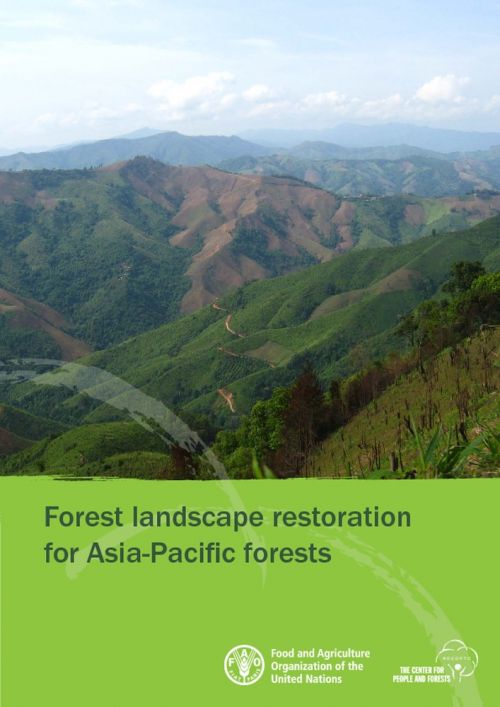APA 6th ed. Forest Landscape Restoration for Asia-Pacific Forests. (2016, March 1). Retrieved from https://www.recoftc.org/publications/0000150
MLA 8th ed. Forest Landscape Restoration for Asia-Pacific Forests. RECOFTC, 1 March 2016, https://www.recoftc.org/publications/0000150.
Chicago 17th ed. RECOFTC. 2016. "Forest Landscape Restoration for Asia-Pacific Forests." Published March 1, 2016. https://www.recoftc.org/publications/0000150.
Forest Landscape Restoration for Asia-Pacific Forests

The Forest Landscape Restoration (FLR) approach, which is still in its nascent stages of development, is rapidly gaining attention as a more appropriate way to restore both degraded forests as well as the surrounding degraded landscape. The great value of this approach is that it integrates forest restoration actions with the desirable objectives of the landscape, and it is undertaken with the full participation of the people who will have a role in the management of the restored areas over the longer term. So, FLR brings together social, environmental and economic considerations in restoring the forests and lands, converse to just restoring an isolated patch of forest without taking into consideration the people in the area. With people having no stake in the forest, the long-term success of the restoration work is not assured.
The need for restoring forests is increasing in the Asia-Pacific region considering the extensive areas of degraded forests and lands. In this context, FLR is currently being promoted widely. FLR is an innovative approach that integrates restoration work in the forest with other activities across the landscape for achieving optimum productivity, both in commercial and ecological terms. However, practitioners are not fully aware of the concept behind the approach. With a view to strengthening FLR approaches in the region, the FAO Regional Office for Asia-Pacific (FAO RAP) and RECOFTC – The Center for People and Forests undertook a multicountry study to review the status of forest and land degradation, restoration approaches commonly used and the policy and institutional environments which can support the introduction of FLR approaches in the region. This report summarizes the findings from this study.

